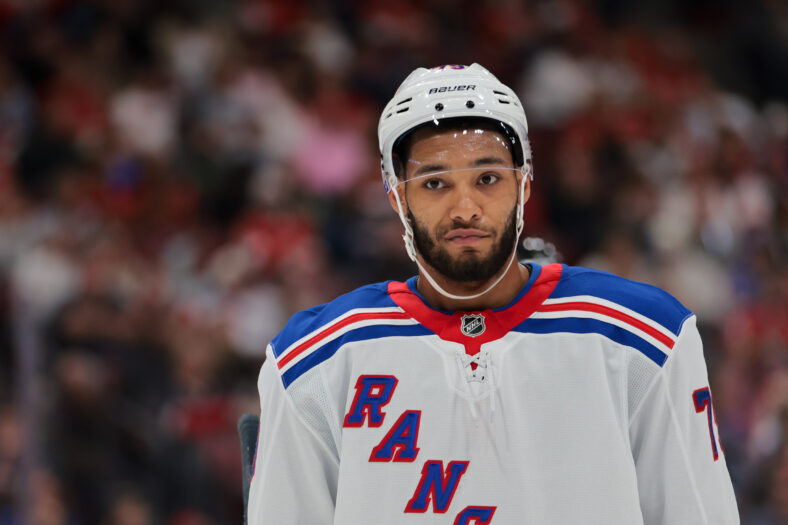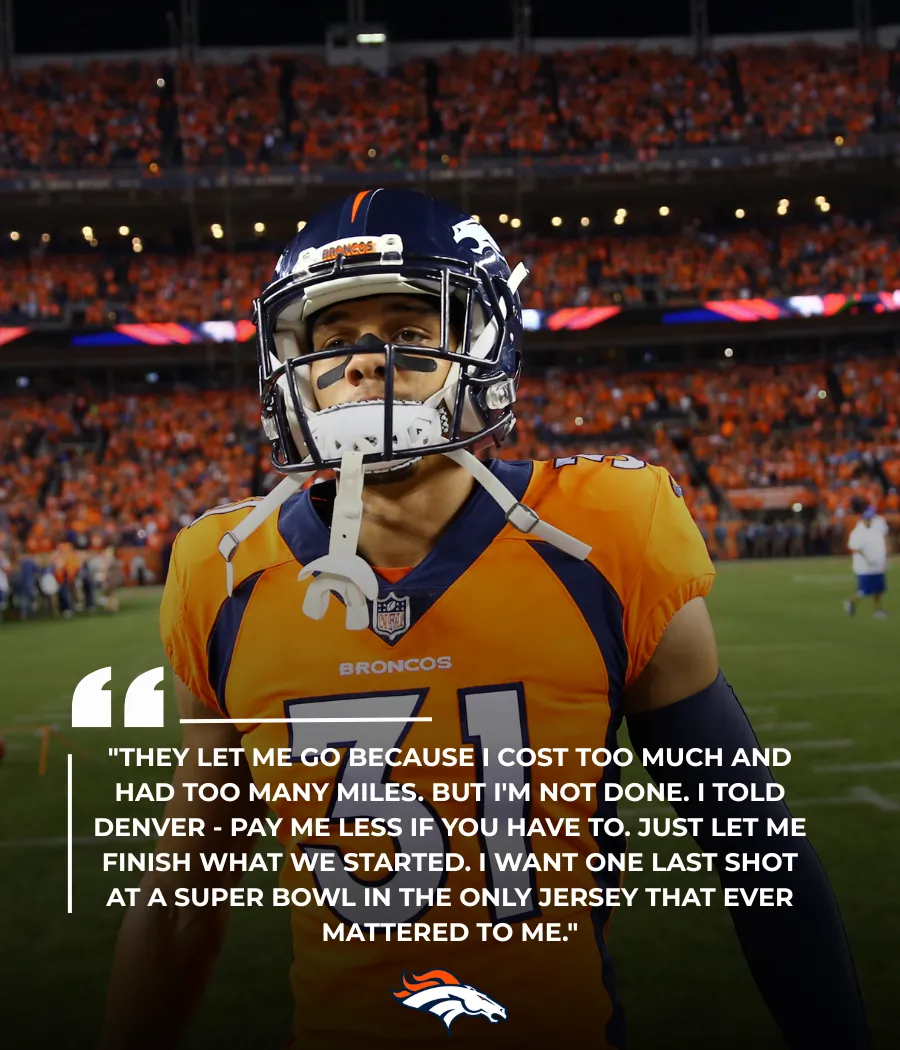
There’s a big difference between the New York Rangers saying they need to make changes to an area of their roster and actually being able to do it.
To his credit, general manager Chris Drury has certainly been determined to remake this team, given the wealth of significant player moves he’s made since the 2024 offseason — ones that ruffled some feathers in the dressing room but hasn’t cowed the GM in the least. More transactions, potentially big ones, are sure to follow with the NHL Draft and the start of free agency looming.
Yet Drury’s desire to transform the Rangers identity through personnel changes is going to be limited by limited salary-cap space ($12.2 million currently) and the reality of what options are available — and whether pursuing any of those represents a sound course of action. Such is the case with the left side of New York’s defense corps, which has the potential to become a significant weak spot next season.
The fact of the matter is this: Drury, who’s looking to turn the defense into a more physically imposing and just plain more competent unit, doesn’t have a farm system brimming with young, NHL-ready defenders. The free-agent market is thin and sure to be overpriced, as free agents always are, and the trade route is likely to bring back perhaps solid but older players who wouldn’t represent long-term solutions.
Potential K’Andre Milelr trade is biggest factor in blue-line uncertainty

The catalyst for all of this, of course, is the uncertain status of K’Andre Miller, the uber-talented but inconsistent 25-year-old. Since being drafted 22nd overall in 2018, he simply hasn’t done nearly enough to convince the current front-office regime that he’ll develop into a linchpin player who can anchor the left side of the defense for years to come.
Miller, who has taken steps backward in the two seasons since what looked like a breakout 43-point effort in 2022-23, is a restricted free agent with arbitration rights. Drury has exhibited no sense of urgency to this point to get Miller signed long term, and rumors have swirled that the Rangers will trade him and his tantalizing skillset that comes with persistent mental and physical mistakes — and little of the physicality the GM is looking for — this summer. A recent report that new coach Mike Sullivan isn’t a fan of Miller’s game adds to the intrigue over whether the University of Wisconsin product has played his last game in a Rangers sweater.
If the team does move on, it must find someone to replace Miller’s nearly 22 minutes per game in a top-four role. Considering the fact that the Rangers still lack a consistent top-pair partner for star blueliner Adam Fox, the GM will have even more significant work to do if he decides to send Miller elsewhere and doesn’t get back an up-and-coming left-side defender in the deal.
If Miller is traded, the Rangers might be in the market for not one but two top-six left-side blueliners. Achieving that goal feels like a tall order. After Miller, Carson Soucy is presently New York’s other top-four option on the left side. Not exactly comforting.
Unrestricted free agency offers a couple of possible solutions, none of which qualify as close to ideal. The best of the bunch is Vladislav Gavrikov, the 6-foot-3, 220-pounder who brings size, bite and mobility, and who on paper would be the perfect running mate for Fox. Gavrikov is coming off a strong season for the Los Angeles Kings, having finished with five goals, 25 assists and a career-best plus-26 rating.
However, Gavrikov is 29 and likely will be able to command a maximum seven-year deal from suitors other than the Kings. Gavrikov will get a nice raise from his $5.875 million salary-cap hit last season, and that is the kind of contract that generally doesn’t age well. Do the Rangers want to go back down a road they’ve traveled far too many times, to predictable results?
The second-best option is probably Ivan Provorov, who had a nice 2024-25 season for the Columbus Blue Jackets (33 points, plus-11) and is extremely durable, having played every game the past three seasons. He’s a year younger than Gavrikov and should cost a little less in AAV, but the 6-1, 213-pounder profiles as a second-pair defender. How much would the Rangers be willing to pay for that? Provorov carried a $6.75 million cap hit last season.
Beyond Gavrikov and Provorov, there’s Dmitry Orlov (who would be available for less money and term because he’ll play next season at 34 years old), former Rangers defenseman Ryan Lindgren (not going there) and a cast of middling possibilities who don’t exactly stir the imagination.
Rangers lack solid defenseman prospects

The inability to develop viable left-side defensemen over the years has also contributed significantly to the current predicament. The Rangers re-signed Matthew Robertson, a second-round pick in 2019 who’s 6-4 and 211 pounds, to a two-year, $1.55 million extension on June 20. However, the 24-year-old has generally struggled in the AHL and was unable to break through to the NHL until the end of last season, when he appeared in two games and played well on a pairing with Fox. Perhaps, he’s a late-bloomer, but Robertson seems to profile more as a depth defender at this point and a long-shot possibility to seize a more regular role.
There’s also Zac Jones, the offensively talented but smallish blueliner who’s played relatively well in 77 games over the past two seasons. At 5-11 and 190 pounds, though, the third-round selection in 2019 is at best a third-pair defenseman who may never be able to defend adequately enough to stick in a lineup consistently. He also expressed major dissatisfaction at his lack of regular minutes this past season — and as another RFA with arbitration rights, seems like a candidate to be moved this summer.
There are trade targets, though none is particularly compelling as anything other than stopgap measures. Perhaps the best way to attack the problem solves two issues: Move right-hand shot Braden Schneider to the left side, where he thrived in limited duty early last season. Doing so would allow the 2020 first-round pick to potentially grow as Fox’s partner — or at least, a second-pair stalwart — and get him off the third pair, which is currently his spot behind Fox and Will Borgen on the right side.
Having moved up three spots in the draft to select the physical Schneider, the Rangers have too much invested in him to play him 15-16 minutes a night against opponents’ third and fourth lines. Allowing Schneider to languish on the third pair isn’t an efficient use of the player and would probably stunt his development as he enters his fifth season.
For better or worse, Drury has made strides in switching up the look and tone of his team. But he faces one of his biggest roster challenges when it comes to the left side of the blue line — one that will require creativity and potentially a lot of money and might prove to be unsolvable, given the largely unappetizing paths forward.


-1750509879-q80.webp)
